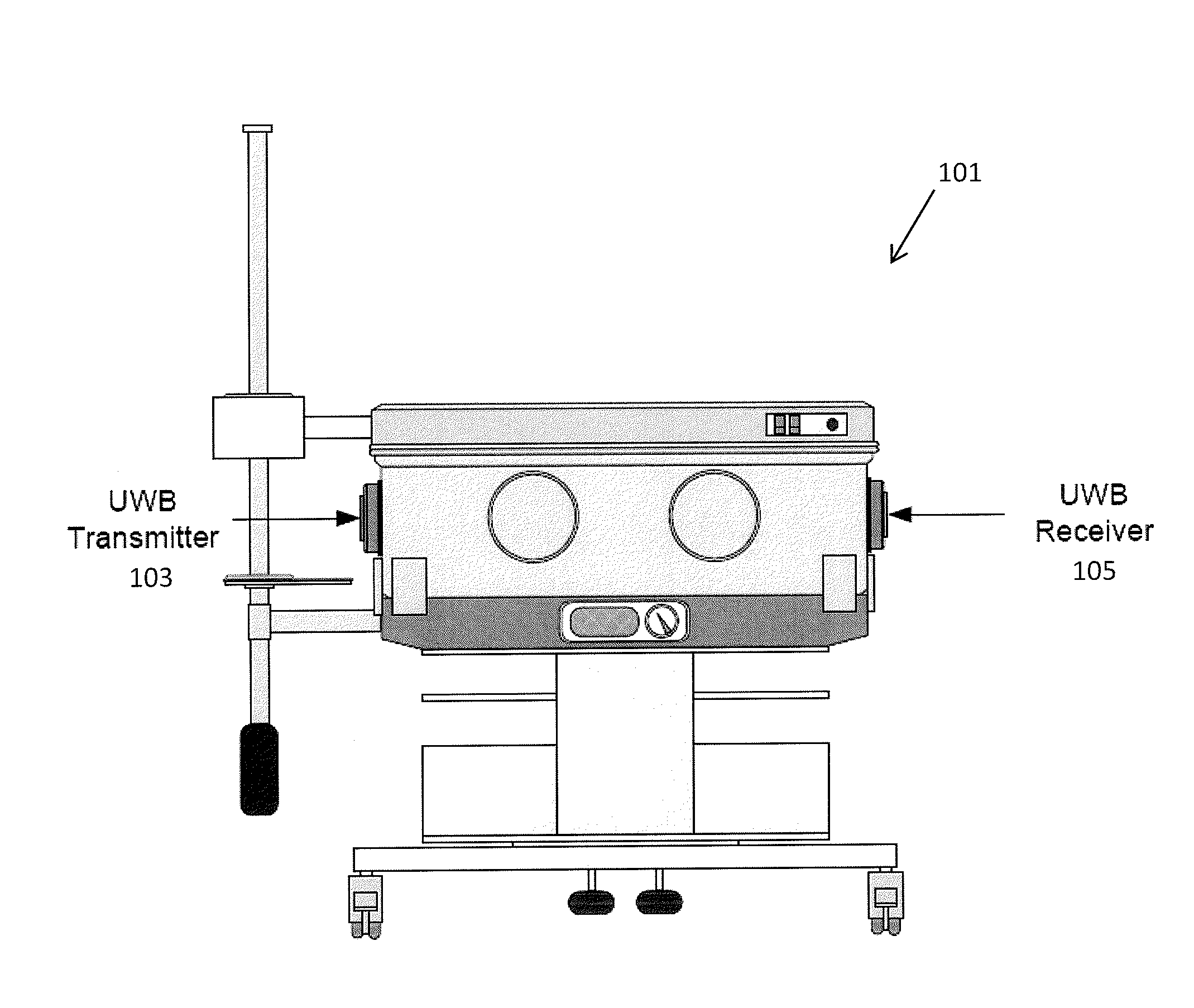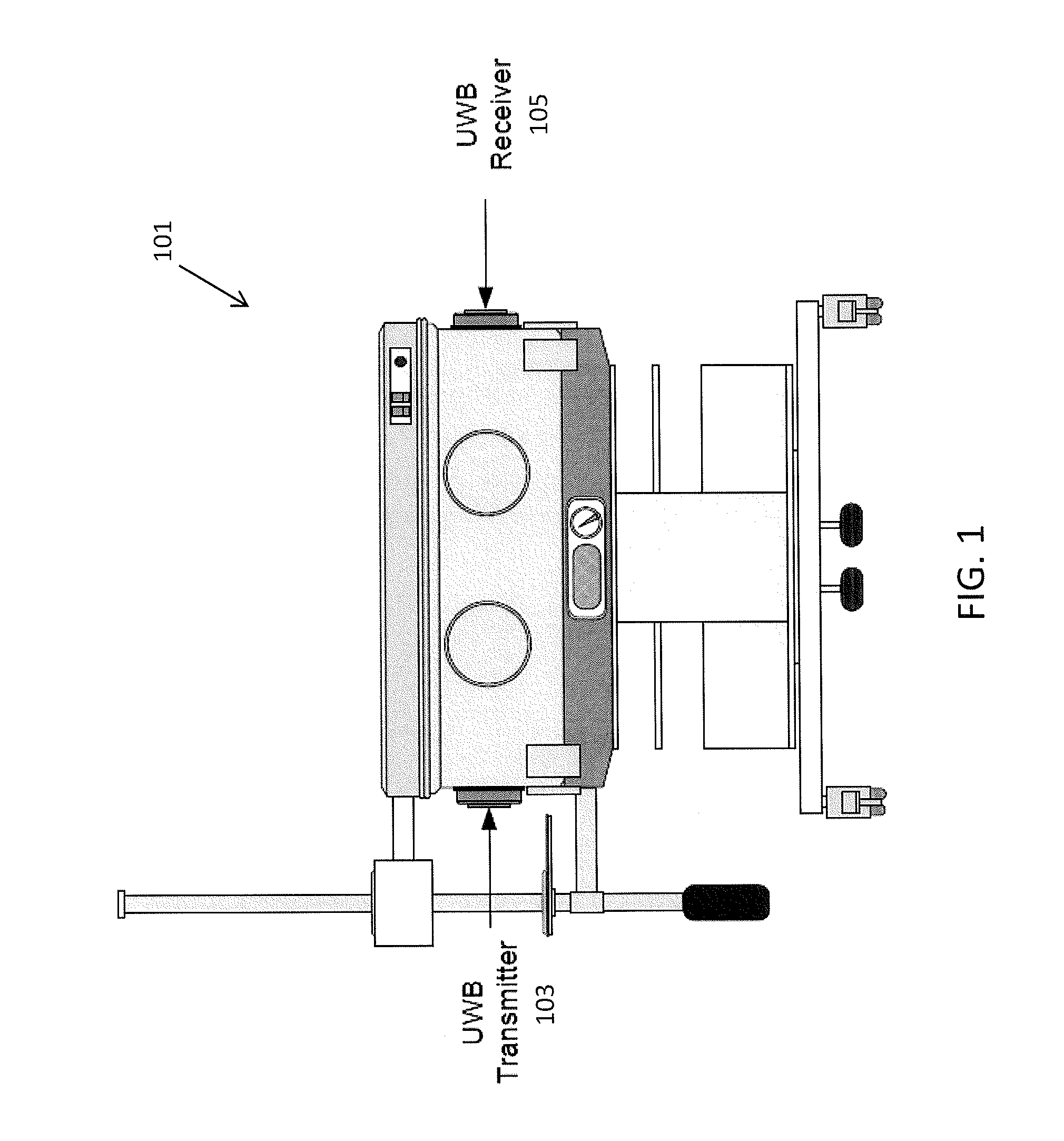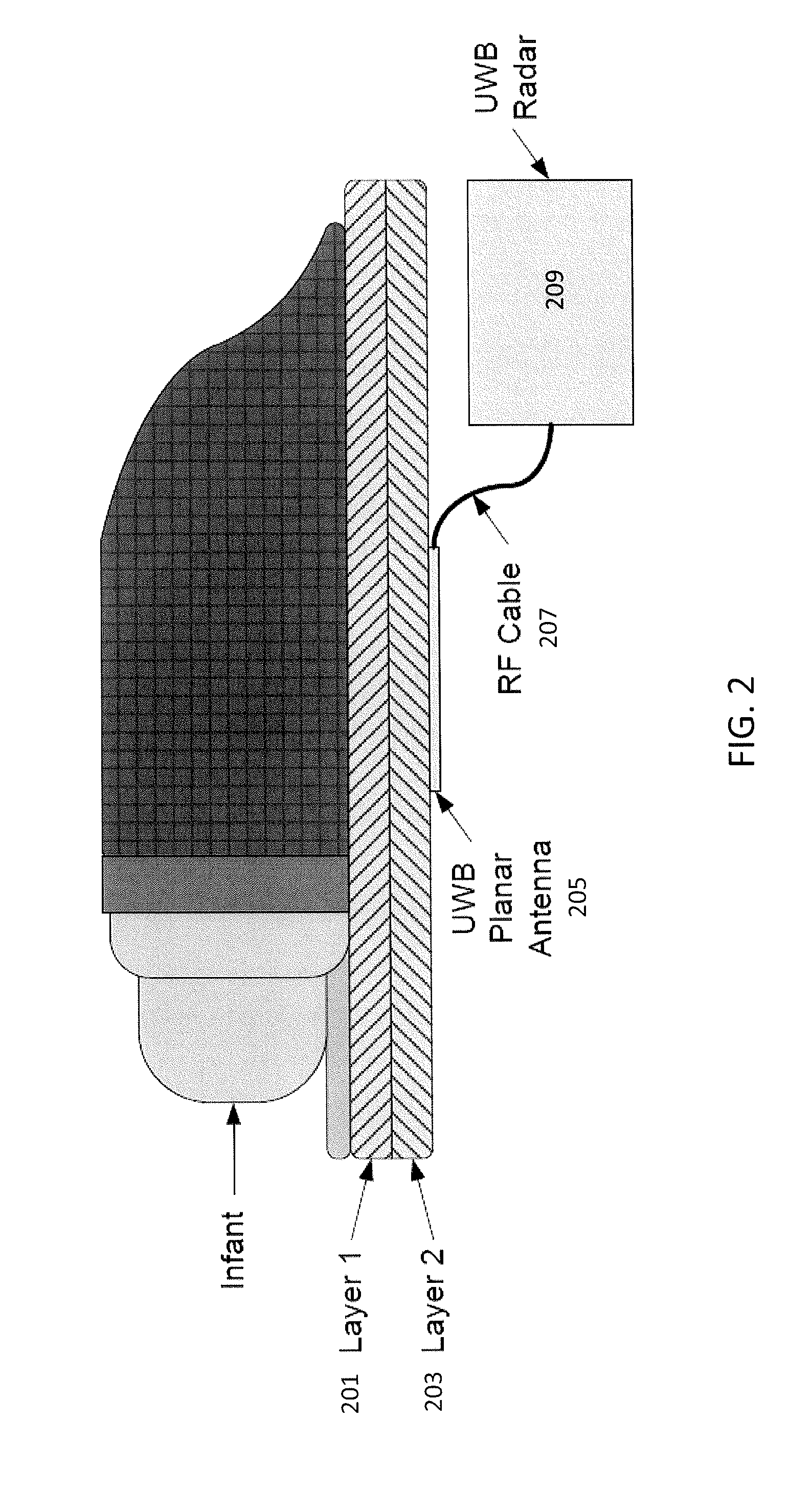Ultra wideband (UWB) baby monitors for detection of infant cardiopulmonary distress
a wideband, baby monitor technology, applied in the field of non-contact baby monitors, can solve the problems of increasing the cost and complexity of the device, and achieve the effects of reducing the reflection of uwb energy, preventing energy loss, and efficient transmission and reception
- Summary
- Abstract
- Description
- Claims
- Application Information
AI Technical Summary
Benefits of technology
Problems solved by technology
Method used
Image
Examples
Embodiment Construction
[0039]The Ultra-Wideband (UWB) monitoring systems described herein may also be referred to as medical radar systems. These systems allow for miniature, extremely low-power medical monitoring systems that are safe and effective. UWB medical radar is an active imaging technology similar in functional concept to ultrasound but is based on electromagnetic, rather than sonic energy. In practice, the systems described herein emit a micro-pulse of electromagnetic energy, typically on the order of one hundred picoseconds in duration, which propagates into the human body. As the energy enters the body, small amounts of the incident energy are reflected back to the device. The reflections are primarily a result of the differences in dielectric properties of the underlying tissues and organs, and can be detected as signals (“reflection signal energy”). The reflection signal energy is then received and processed using signal processing algorithms to extract information on the location, size, an...
PUM
 Login to View More
Login to View More Abstract
Description
Claims
Application Information
 Login to View More
Login to View More - R&D
- Intellectual Property
- Life Sciences
- Materials
- Tech Scout
- Unparalleled Data Quality
- Higher Quality Content
- 60% Fewer Hallucinations
Browse by: Latest US Patents, China's latest patents, Technical Efficacy Thesaurus, Application Domain, Technology Topic, Popular Technical Reports.
© 2025 PatSnap. All rights reserved.Legal|Privacy policy|Modern Slavery Act Transparency Statement|Sitemap|About US| Contact US: help@patsnap.com



